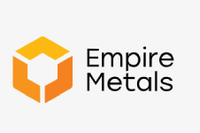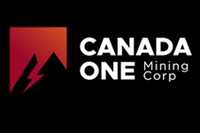Copper Price 2025 Year-End Review
The copper price reached new record highs in 2025, fueled by significant supply chain disruptions and uncertainty over US tariffs.

Copper prices were volatile in 2025, with high levels of uncertainty influencing the market.
Changing US trade policy, as well as traditional supply and demand fundamentals, worked together to move the metal.
Increasing demand and a lack of new supply have long been key drivers for copper, and this year new forces played a role in the form of tariff threats caused by significant policy shifts from the Trump administration.
Copper price in Q4
Experts have widely predicted a copper supply deficit over the last few years.
On the demand side, industrial usage tied to the energy transition is rising, and that's on top of high copper consumption due to increasing rates of urbanization in the Global South.
Further consternating the market is a concerning supply situation. First Quantum Minerals' (TSX:FM,OTC Pink:FQVLF) Cobre Panama mine, which previously contributed approximately 1 percent of global copper supply, has been on care and maintenance since the Panamanian government ordered its closure at the end of 2023.
More recently, in September, Freeport-McMoRan (NYSE:FCX) announced the temporary closure of its Grasberg mine in Indonesia due to an ingress of 800,000 metric tons of wet material into the main Grasberg block cave (GBC), killing seven workers. The company has launched an investigation and adjusted its annual guidance.
Even though both operations are expected to return to full production, the process will take time.
In September, Panama said it would initiate an environmental and social audit of Cobre Panama by the end of 2025, with the mine to begin production in early 2026. Tied to the restart will be a significant change to the contract under which First Quantum had previously been operating, ensuring state ownership of the land and its resources.
Meanwhile, Freeport said that operations will resume at the unaffected Big Gossan and Deep Mill Level Zone mines before the end of 2025, but extraction at the GBC won't restart until the second quarter of 2026. Freeport also noted that it isn't expecting the GBC to return to full production until 2027.
Once restarted, the mines will be a welcome relief to an overburdened copper market, but in their closed state, their lack of contribution is significantly shifting the supply situation.
In an October report, the International Copper Study Group predicted a 178,000 metric ton global refined copper surplus for 2025, saying it would shift to a 150,000 metric ton deficit in 2026.
However, by the end of November, the situation had evolved, with the group noting a smaller refined copper surplus of about 94,000 metric tons through the first nine months of 2025.
With just one month left in the year, the market looks to be approaching a deficit sooner than expected.
The November release outlines growing use of refined copper, which rose 5.5 percent during the first nine months of 2025; refined copper output rose just 4.3 percent, while mining production increased 2.2 percent.
One moderating factor for supply/demand could be a soft macroeconomic environment, particularly in the US.
In an email to the Investing News Network at the start of the fourth quarter, Patricia Barreto, senior analyst with S&P Global Commodity Insights, said shifting policy could cause a slowdown in US copper demand growth.
“US demand from construction and manufacturing is expected to remain steady but not robust, as policy headwinds for renewables and EVs, elevated input costs, and project delays persist," she said.
"Most market watchers anticipated continued arbitrage opportunities between US and global benchmarks with periodic local price spikes as trade policies evolve."
How did copper perform for the rest of the year?

Copper price, January 1 to December 3, 2025.
Chart via the Investing News Network.
Copper price in Q1
The copper price rose sharply in the first quarter amid strong supply and demand fundamentals.
These included supply chain disruptions following a major power outage in Chile at the end of February, which caused a temporary shutdown at BHP's (ASX:BHP,NYSE:BHP,LSE:BHP) Escondida, the world’s largest copper mine.
Prices also saw major momentum amid tariff threats, as US President Donald Trump made several significant trade policy announcements at the start of his second term in office.
Among them was the signing of an executive order at the end of February that invoked Section 232 of the Trade Expansion Act and initiated a national security investigation into the impacts of copper imports into the US.
Although tariffs wouldn’t be applied to copper until Q3, the move still prompted traders to stockpile refined copper at Chicago Mercantile Exchange warehouses to get ahead of any potential tariffs.
Copper price in Q2
Volatility was the story in Q2, as markets were affected by a widening supply deficit and the threat of US tariffs.
The start of the quarter saw markets plummet following Trump's "Liberation Day" tariff announcement, which applied a baseline 10 percent tariff to all imports into the US, with additional retaliatory tariffs following shortly after.
Additionally, the US and China butted heads and initiated a tariff war that saw Chinese goods entering the US hit with 145 percent tariffs; US goods entering China were levied with 125 percent tariffs.
The tariffs caused a great deal of uncertainty to creep into the US bond market, pushing yields on 10 year treasuries up sharply as investors began dumping these assets. The move sparked fears of an imminent recession, prompting broad selloffs across commodities and equity markets.
Copper price in Q3
The third quarter was also defined by high volatility, with copper prices in the US surging as traders sought to import large volumes of the metal before the implementation of Section 232 tariffs.
The imports caused a significant disparity between the US and international markets, with premiums on the Comex rising to 30 percent above those at the London Metal Exchange. Putting that disconnect into context, Jacob White, exchange-traded fund product manager at Sprott Asset Management, explained that a copper short squeeze on the Comex in 2024 pushed premiums to a high of 8 percent. The London Metal Exchange and Comex are typically much closer to par, with an average differential of 0.5 percent over the past five years.
Ultimately, refined copper was exempted for the time being, with tariffs set to be phased in at 15 percent in 2027 and 30 percent in 2028. The move pulled the rug out from under traders, causing the US prices to collapse.
Don’t forget to follow us @INN_Resource for real-time news updates!
Securities Disclosure: I, Dean Belder, hold no direct investment interest in any company mentioned in this article.
Editorial Disclosure: The Investing News Network does not guarantee the accuracy or thoroughness of the information reported in the interviews it conducts. The opinions expressed in these interviews do not reflect the opinions of the Investing News Network and do not constitute investment advice. All readers are encouraged to perform their own due diligence.





